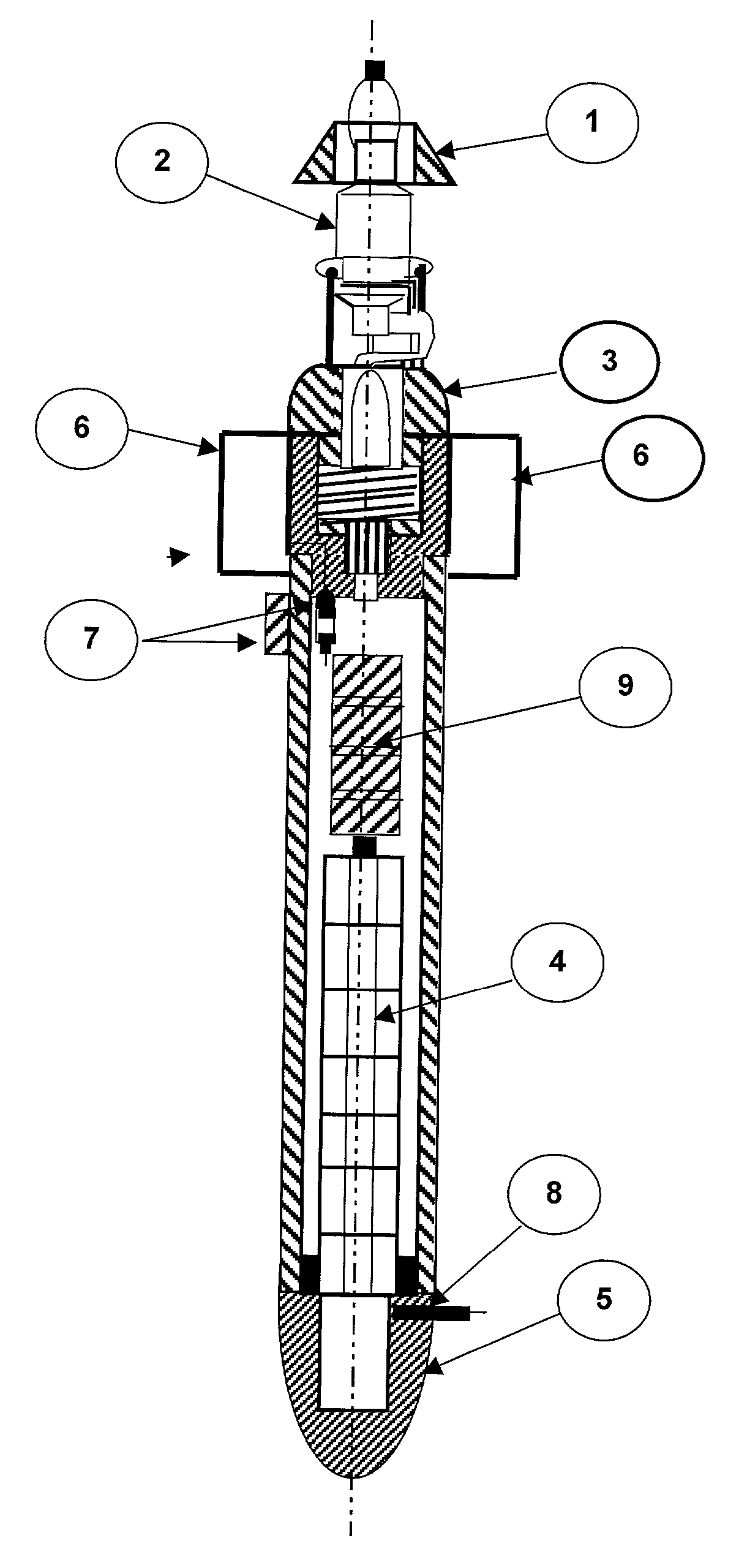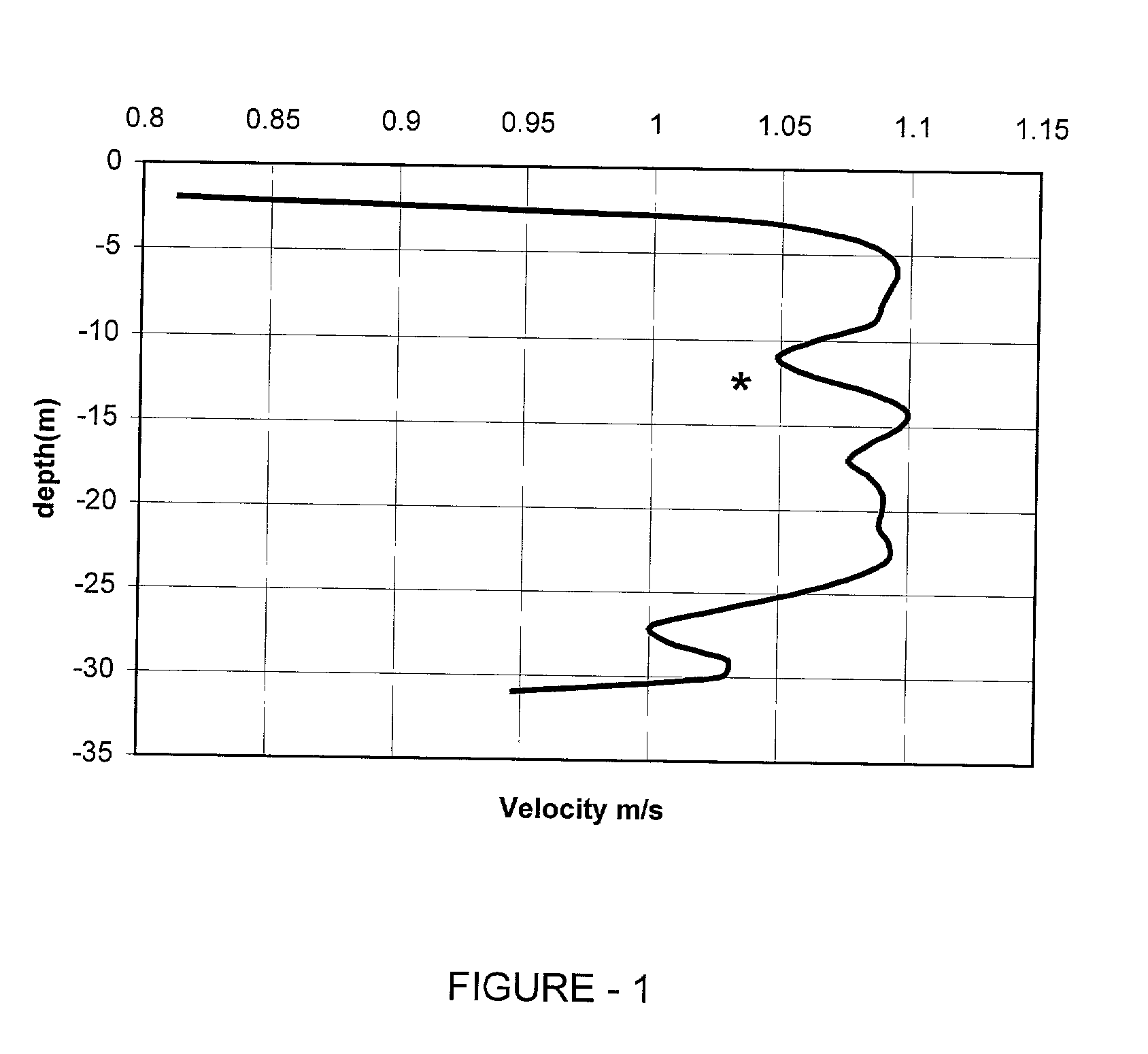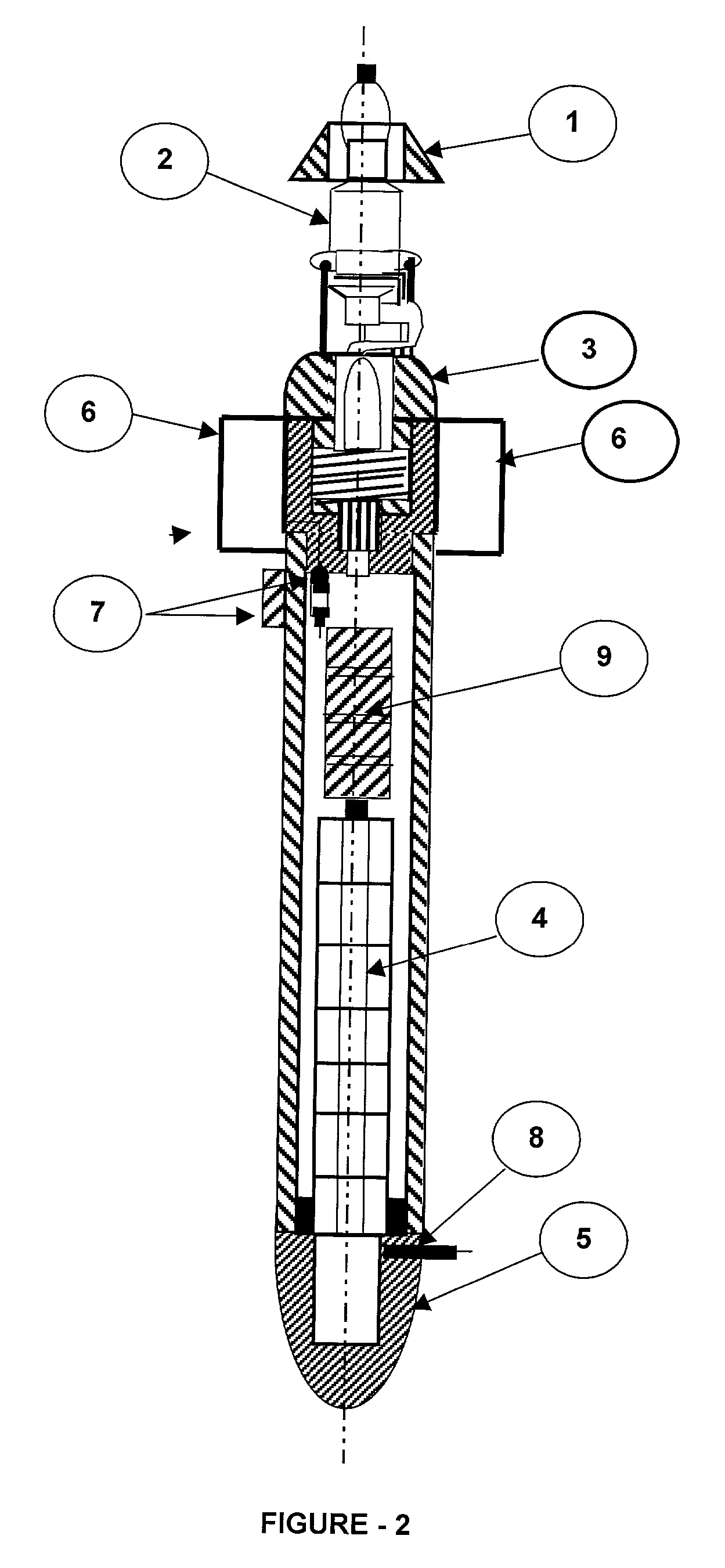Controlled thruster driven profiler for coastal waters
a profiler and thruster technology, applied in the direction of instruments, specific gravity measurement, volume metering, etc., can solve the problems of affecting the measurement process, large devices, cumbersome and expensive operation, etc., and achieve the effect of requiring special purpose deck gear on the support vessel and additional gear and homing gear equipment on a separate recovery vessel
- Summary
- Abstract
- Description
- Claims
- Application Information
AI Technical Summary
Problems solved by technology
Method used
Image
Examples
Embodiment Construction
[0047] In a preferred embodiment of the present invention, the specifications of the controlled thruster driven profiler have been designed to produce a lightweight device with less than 20 kgs dry weight, producing a net positive buoyancy of less than 1 kg which automatically orients it vertically in sea water when not in motion. The natural built-in buoyancy eliminates the need to use special purpose syntactic foam cladding, as is necessary in other profiler types where buoyancy is the controlling factor on the motion of the body. The power source of the present device is contained within a pressure proof casing which is able to withstand depths in excess of 100 meters and which suffices for most shallow water applications. The position of the batteries act to bias the center of gravity of the body towards the nose cone as shown in FIG. 2. The estimated speed of the profiler is typically 2 m / s resulting in a total drag force less than 20 N with bollard outputs in the range 1 to 3 ...
PUM
 Login to View More
Login to View More Abstract
Description
Claims
Application Information
 Login to View More
Login to View More - R&D
- Intellectual Property
- Life Sciences
- Materials
- Tech Scout
- Unparalleled Data Quality
- Higher Quality Content
- 60% Fewer Hallucinations
Browse by: Latest US Patents, China's latest patents, Technical Efficacy Thesaurus, Application Domain, Technology Topic, Popular Technical Reports.
© 2025 PatSnap. All rights reserved.Legal|Privacy policy|Modern Slavery Act Transparency Statement|Sitemap|About US| Contact US: help@patsnap.com



